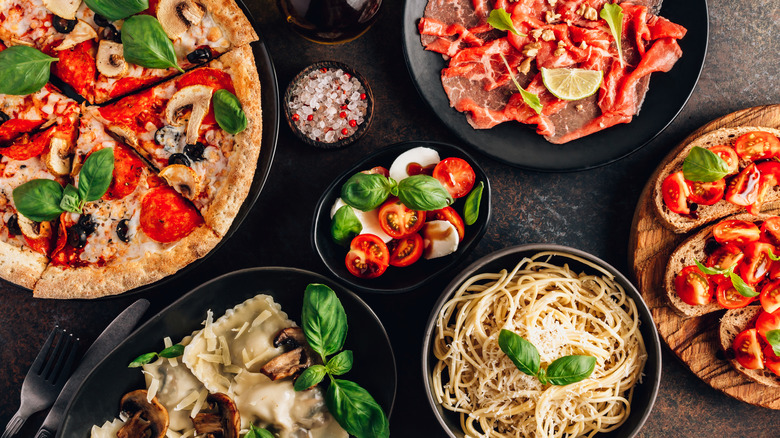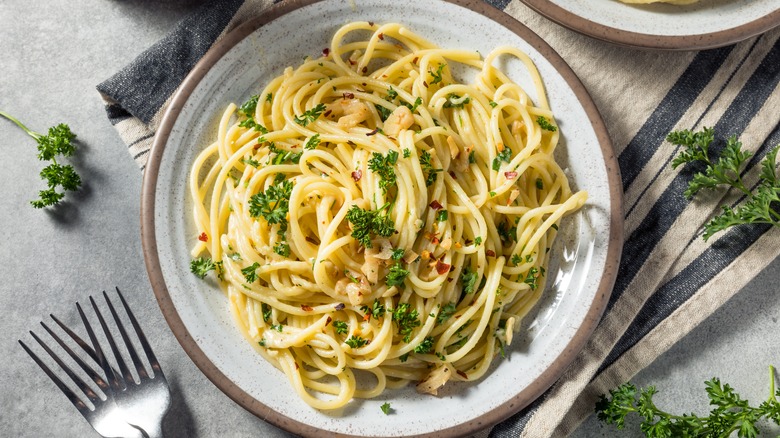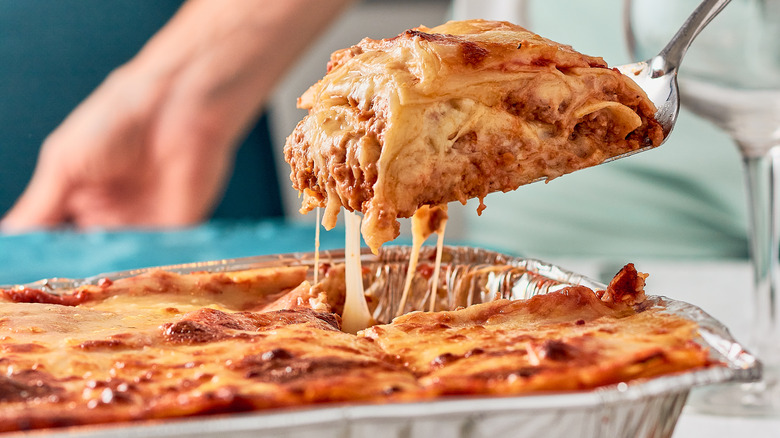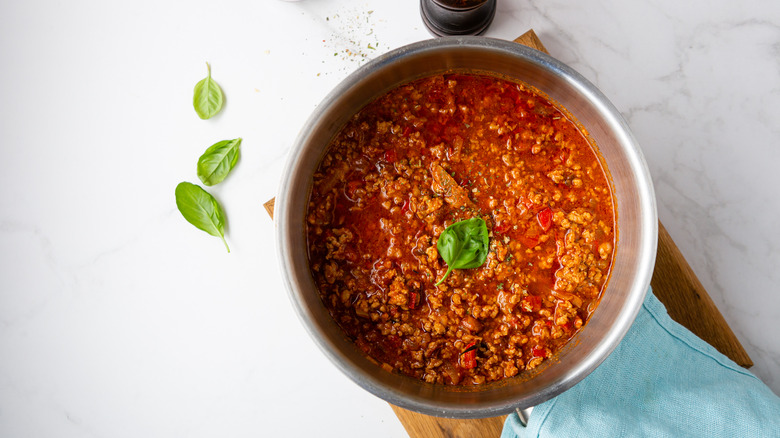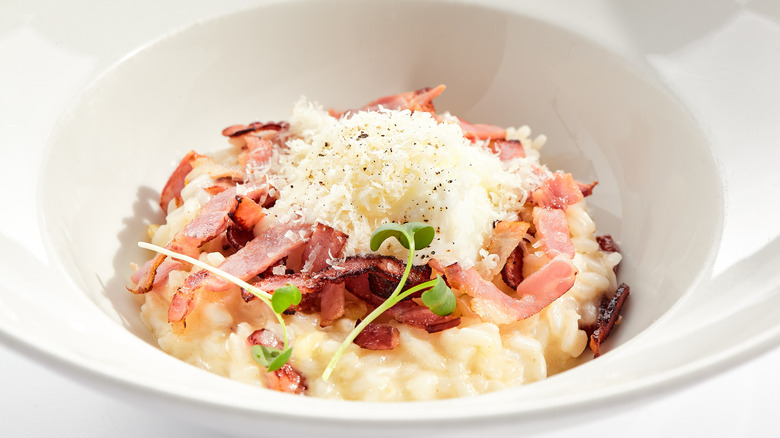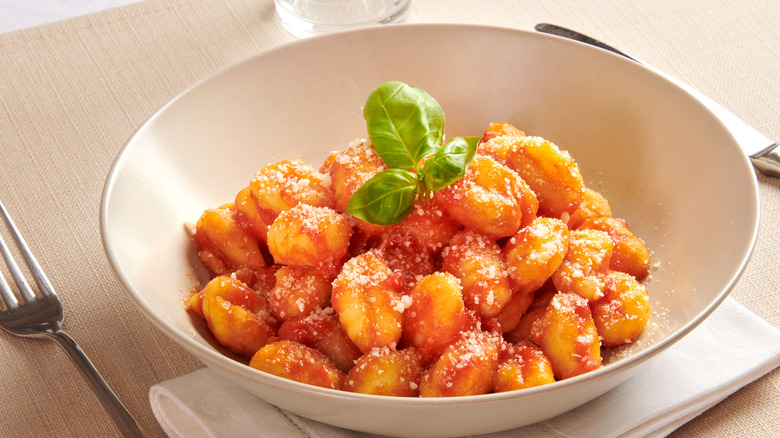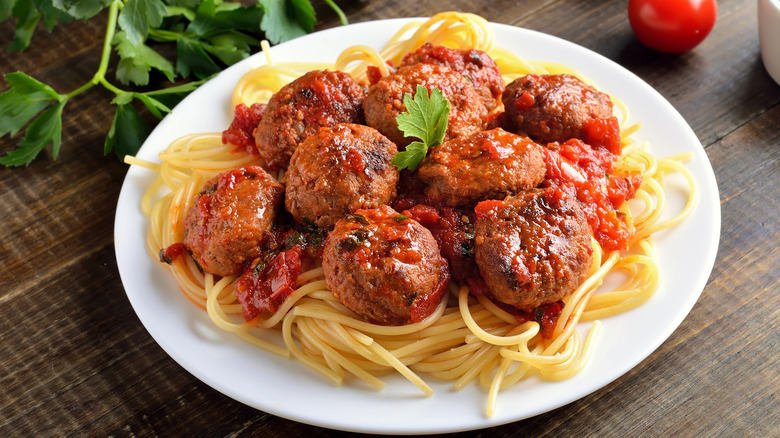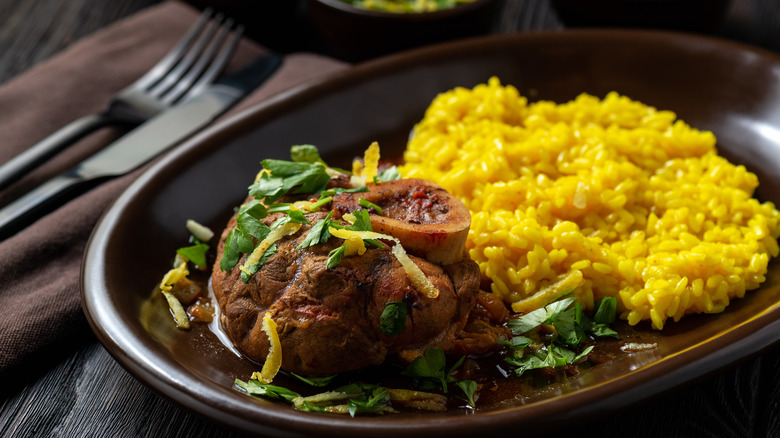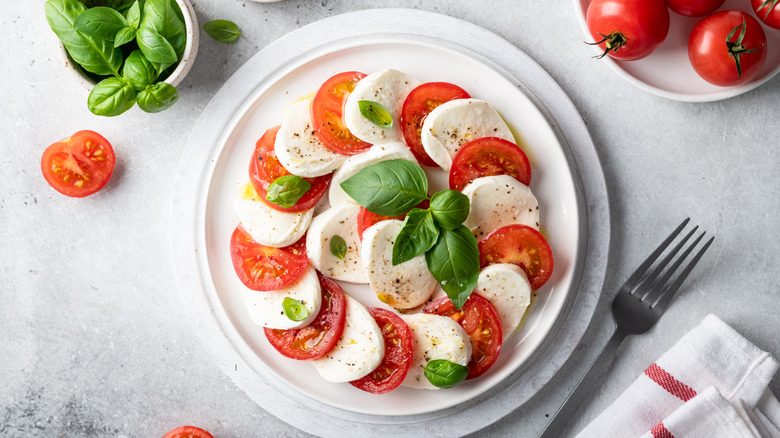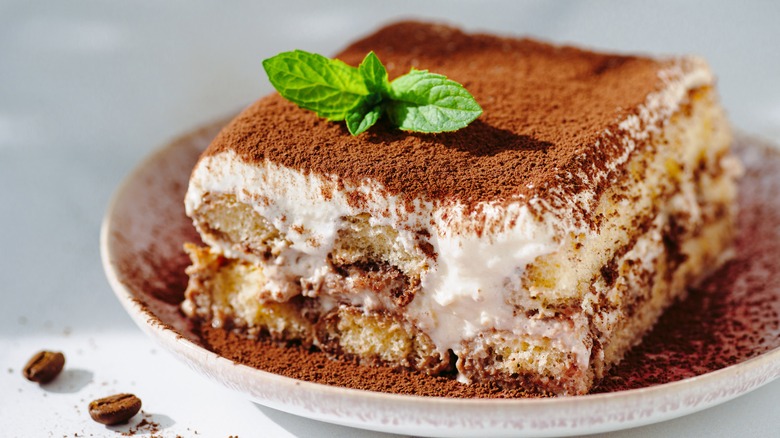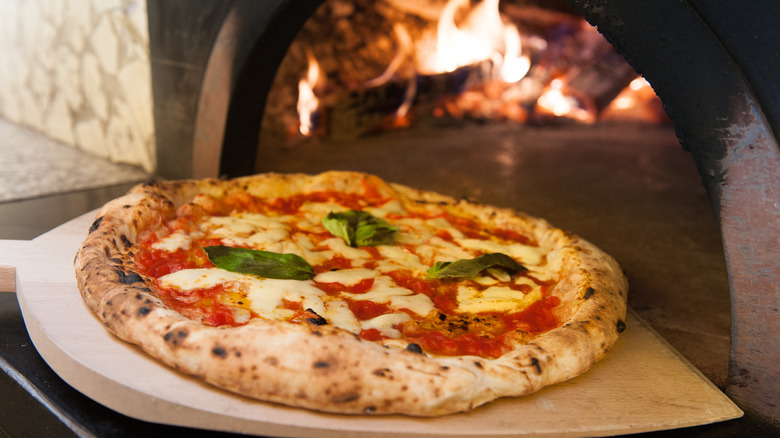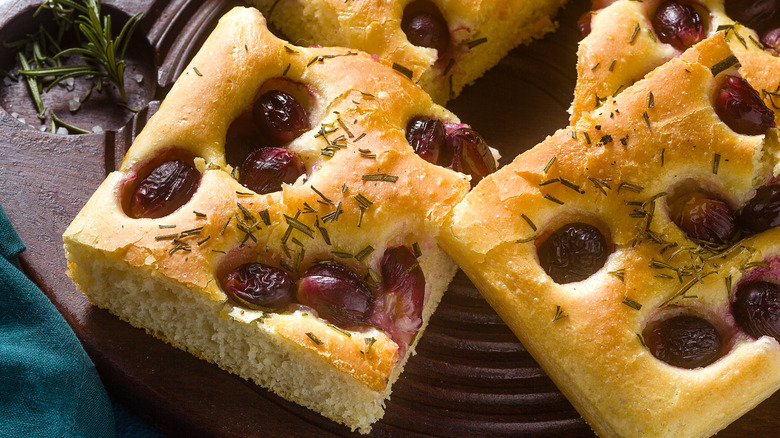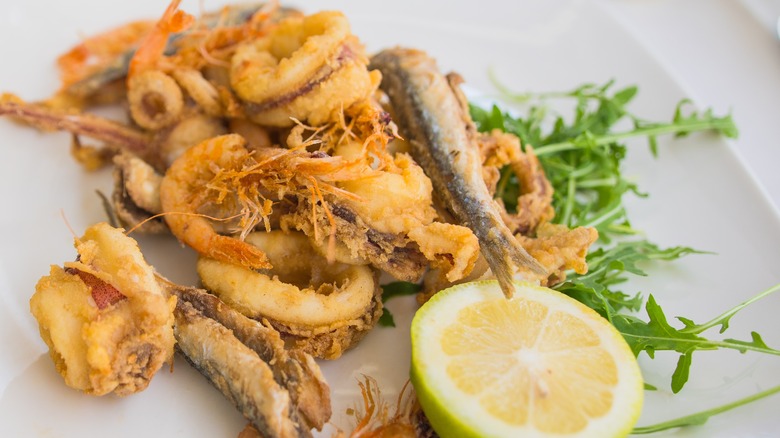6 Italian Foods You Should Always Order And 6 You Shouldn't
There's no doubt that Italian cuisine is an international favorite. It's not surprising when you consider it's dominated by simple, unpretentious dishes that highlight top-quality ingredients without hiding behind complicated techniques or complex food pairings. This is a cuisine in which many classic dishes developed out of necessity to create straightforward and nutritious meals without compromising on quality and flavor.
Although the quality is generally excellent, unfortunately, many Italian restaurants feature some questionable dishes on their menus. These include options that work better as homemade dishes or that simply don't fare well in a restaurant environment. The potential of the items on this list is not debatable; most can be made into amazing meals. However, sometimes the restaurant and the kitchen staff simply cannot deliver and fail to showcase the best version of the dish. If you are constantly worried about what to get at your local Italian joint, use this guide to ensure you always get the best order on the menu.
Should: Pasta
Pasta is the queen of Italian cuisine. Along with pizza, it is one of the most famous Italian foods that placed the nation on the international gastronomy map. You will find regional pasta varieties in all corners of the country, and the rough estimate of 350 Italian pasta shapes speaks volumes about its role in everyday life. Pasta is not supposed to be an overly pretentious or complicated dish. It originated during less affluent times as a nutritious meal garnished with anything at hand.
While noodles in various forms exist worldwide, Italians have perfected the art of pasta making. Traditional Italian pasta is made from pure durum wheat flour, which usually makes it sturdier, meaning that it will hold its shape and retain a chewy texture after cooking.
Pasta is usually one of the more reliable options at Italian restaurants. Often, kitchens will have a trusted supplier, and good-quality pasta is no longer a rarity. In the ideal situation, all pasta is made on-site, which is usually the case if it is the house specialty. This dish is also a go-to choice as you can often select the pasta shape and sauce combination for a semi-customized meal.
Shouldn't: Lasagna
Lasagna can be a great meal. This baked pasta classic has long been one of the best internationally known foods of Italian origin, but perhaps it works better homemade than as a restaurant order. The problem with lasagna is that it is usually made in large, deep trays and has to be cooked all at once.
Of course, restaurants will not bake it from scratch once you place your order. Most kitchens portion out a pre-baked batch and reheat it when required. If you are lucky, you will get freshly baked lasagna with a warm and gooey center. More likely, the batch has already chilled and your serving will require significantly more time in the oven to heat evenly. This is a tricky balance and your piece of lasagna might have a nicely melted top but a stiff and cold center. The same scenario also happens with pre-baked single portions. The heat needs time to penetrate through all those thick layers, and we know that time is an issue in busy restaurant kitchens.
Lasagna is also a good way for restaurants to cut costs. Adding more of that cheaper bechamel and skimming on pricier meat is not the right recipe for a good dish, so make sure you trust the establishment if you really want to order lasagna.
Should: Ragù
In its simplest form, Italian ragù is any type of sauce made with ground, shredded, or chopped meat; and yes, the legendary Bolognese is one of them. The recipes vary depending on the region and local tradition, but you will usually find ground beef, pork, or a combination of both. The base is usually made with a traditional Italian sofrito — a combination of diced onion, celery, and carrots — cooked with meat, a bit of tomato puree, seasonings, and herbs. A splash of white or red wine is sometimes added for flavor and depth.
Ragù is a slow-cooked dish that requires a lot of time on low heat, so you can expect all those flavors to incorporate well. The recipe is also difficult to mess up. The list of ingredients is usually short and it does not call for any unusual cooking techniques. The only trick is to let time do its magic. Meat sauces reheat well too, so expect the same with Italian ragù; your order will always arrive nice and warm.
In the rare case that you are served an underwhelming or poorly executed ragù, always ask for grated cheese — preferably fresh and not those dry shavings — and sprinkle it over top. There is nothing that can't be fixed with cheese.
Shouldn't: Risotto
We should be honest here; the chances of finding a properly made restaurant risotto are unlikely. The risotto-making technique is very strict and explicit, and there aren't really any shortcuts if you want to create a good version. The type of rice is crucial as the grain needs to have particular qualities for optimal consistency. The cooking process is time-consuming and requires regular stirring, so the pan must be constantly watched. And let's not forget that a chef must know when risotto needs to be taken off the stove to prevent it from turning into a soft mush. All these steps leave room for mistakes, which makes risotto a very tricky option to order.
The first sign that is a clear giveaway your risotto has not been made fresh is the speed at which it comes to your table. Properly made risotto takes time, so if you see a plate in front of you in under 10 minutes, you can be sure the chef did not follow all the steps. The worst scenario is that they may have used pre-cooked rice and added garnishes.
Be careful where you get your risotto. This delicate dish is easy to mess up — an overly soupy or thick version is not a characteristic of a good risotto — so choose your Italian restaurants wisely.
Should: Gnocchi
Gnocchi is a collective name for various dumplings typical of traditional Italian cuisine. Though we mainly think of them as boiled, thumb-sized morsels made with mashed potatoes, regional varieties use different ingredients and other cooking styles. They can be fried to attain a crisp crust or baked into a gnocchi casserole. Gnocchi alla romana is a popular dish from Rome that does not resemble its potato-based cousins. The dish is made with semolina and shaped into thick disks sprinkled with cheese and then broiled. Another close cousin in the gnocchi repertoire is incredibly light ricotta-based gnudi, another dish you may find at your local Italian restaurant.
Gnocchi are great because they give you a perfect neutral base to pair with various sauces. They freeze well and retain much of their qualities if stored properly. You can rest assured that they will be cooked once you order them, avoiding the disappointment of being served a cold dish. If pasta is not your thing or you are up for another Italian specialty, gnocchi are a great alternative that will delight you with their chewy texture and versatility.
Shouldn't: Dishes that are not Italian
Italian cuisine is incredibly diverse and region-specific, and many dishes typical in the north will be difficult to find in the south. Similarly, ingredients are not equally represented throughout the country. With the abundance to choose from, it is hard to understand why some phony dishes that pass as Italian would deserve a spot on Italian restaurant menus — especially if they are claiming to be authentic.
We have nothing against spaghetti and meatballs, but the dish does not belong to traditional Italian cuisine, nor should it be promoted as such. The same goes for the Americanized version of fettuccine Alfredo, a dish created in Rome that's far different than what you might find at Olive Garden. Even the popular basket of garlic bread you typically find at Italian restaurants in the U.S. has no counterpart in Italy.
If you want to pay an honest homage to Italian cooking, choose restaurants with authentic menus filled with genuine Italian dishes. Also, don't forget to listen to the waiter's advice, as they will likely recommend the best pasta and sauce pairing or suggest the freshest items of the day.
Should: Ossobuco
As you can guess from its official name, ossobuco alla Milanese most likely originated from Milan. It consists of a thick piece of cross-cut veal shank, slowly braised in a thick tomato-based sauce along with a mix of diced carrots, celery, and onions. It usually includes thyme and bay leaf to season and an obligatory splash of wine. The meat is slowly braised on low heat until it is butter soft and the marrow can be scooped out of the bone. The final step is an herbal gremolata sauce made with chopped parsley, garlic, and lemon zest to balance out all those heavy flavors.
Ossobuco is not always a staple restaurant dish, but if you see it, it is a good sign that the place is knowledgeable about traditional Italian cooking and its specialties. There are no shortcuts with the preparation, so you can expect that the kitchen has spent time and effort building up all the flavors and cooking the meat. Because of this time-consuming process, ossobuco will always be an ideal restaurant order as we rarely find enough time to cook it at home.
A traditional partner served with ossobuco is a Milanese saffron risotto. Even if you find time for the long and slow braise, cooking risotto on top of it might be an overwhelming additional task. You are better off ordering this hearty classic at a reputable restaurant.
Shouldn't: Caprese
A Caprese salad is a star Italian dish, but it should not be your go-to order in all seasons. The classic recipe consists of a simple combination of sliced mozzarella layered with thick slices of fresh tomato. The plate is garnished with fresh basil leaves, drizzled with olive oil, and sprinkled with salt. Because it only uses a few ingredients, the various elements must be of exceptional quality.
This is a salad that screams summer. In Italy, tomatoes are seasonal and reserved for hot summer days. Although they are available throughout the year, you will rarely find a winter tomato that could compare with its sweet, ripe, and juicy summer counterpart. The same goes for mozzarella, given that it is one of the main elements of the dish and should provide a ton of flavor. You want the freshest and juiciest mozzarella, preferably the top-notch buffalo mozzarella from the South, which is unfortunately not the standard you will find in a generic restaurant Caprese.
The salad could be a good choice in the summer, but make sure that you can trust the restaurant on the quality of the products it puts on the plate.
Should: Tiramisu
If pasta is the queen of savory Italian dishes, tiramisu must be the king of Italian desserts. Though it is not an ancient recipe — it originated in the second half of the 20th century — tiramisu has become a firm favorite in the dessert department, both homemade and served at restaurants. Today it is easily found at most Italian eateries, and it should be one of your go-to orders.
Tiramisu is not an overly complicated dessert. It consists of coffee-soaked ladyfingers coated with a light and airy egg custard and generously dusted with unsweetened cocoa powder to add a touch of bitterness and balance out the sweetness. Because it is loved by many, tiramisu is a common restaurant order. It promises a fast turnaround and means you rarely see a stale or days-old version.
Its overall popularity tends to influence any respectable restaurant to perfect the recipe and ensure quality and flavor are on point. Tiramisu can be whipped up in no time and is refrigerated, so you don't have to worry about potential contamination problems. Also, let's not ignore that this dessert is so delicious it would be a shame to skip it after a nice meal.
Shouldn't: Pizza
You might think that labeling pizza as a dish to avoid at a restaurant is blasphemous, but there is a good reason why you must be careful about where you get it and who is making it.
Pizza is perhaps the greatest Italian export to help Italian cuisine reach star status. Though we often think of it as a simple and quick dish on the go, Italians take their pizza seriously. They have perfected the craft, but the same level of dedication is not often replicated outside Italy. As it is such a popular and widely available dish, you will encounter many versions that cannot compare, both in the quality of the dough and the toppings. Your safest option is to go to a pizzeria rather than a generic Italian restaurant.
You should also remember that pizza wears many different hats, so while you might expect a thin and crisp Napoletana, the restaurant might specialize in a thicker Roman style. To avoid any future pizza disappointment, check the joint you are visiting ahead of time to know what to expect. Do your research because there are still great pizzerias outside of Italy where you can get a real, high-quality pie.
Should: Focaccia
Forget about flavorless breadsticks and chewy garlic bread; focaccia should be your bread choice at any Italian restaurant. It is a versatile type of bread that goes well with everything, whether you pair it with your favorite antipasti or order it to mop up saucy braised dishes.
There are several Italian focaccia varieties, but the one we mainly associate with the name is the Ligurian leavened version with tiny pockets dispersed along its surface. A classic focaccia recipe includes flour, yeast, water, salt, and olive oil. The dough has a high hydration level that bakes into a soft, moist bread that stays fresh for longer. The olive oil also provides plenty of flavor and gives the bread a nice crispy crust that soaks up all those vegetal flavors. The best thing about focaccia is that it is commonly dressed up with toppings. As you munch away, you might enjoy an olive or fresh rosemary to provide an additional flavor boost.
Focaccia is often made in-house, and in the best-case scenario, your order will arrive while the bread is still slightly warm. As there are many focaccia aficionados, this bread has a fast turnaround. Consider yourself lucky if you find it on the menu, then order it immediately.
Shouldn't: Fried dishes
Italian cuisine does not shy away from deep-fried dishes. They are present in most regions, but the most popular option is fritto misto, a combination of different vegetables or seafood coated in a light batter and fried until golden. The dish is usually served as a starter but is also a great snack.
It is generally hard to go wrong with fried dishes — any ingredient that is battered and fried will probably taste good — but there are many perils that come with the order. Frying is a great way to cover up ingredients of lower quality or that aren't at their peak, so you can never be sure what you are getting. While no one wants to eat sad limp veggies, freshness is especially important when it comes to seafood, as one bad piece can cause havoc. Also, the quality of the frying oil can have a great influence on flavor, so be discerning about which Italian restaurants you go to if you're planning to order a fried dish.
